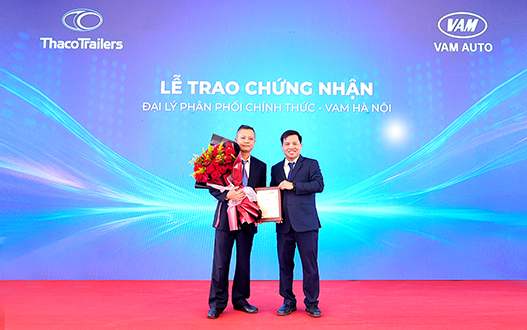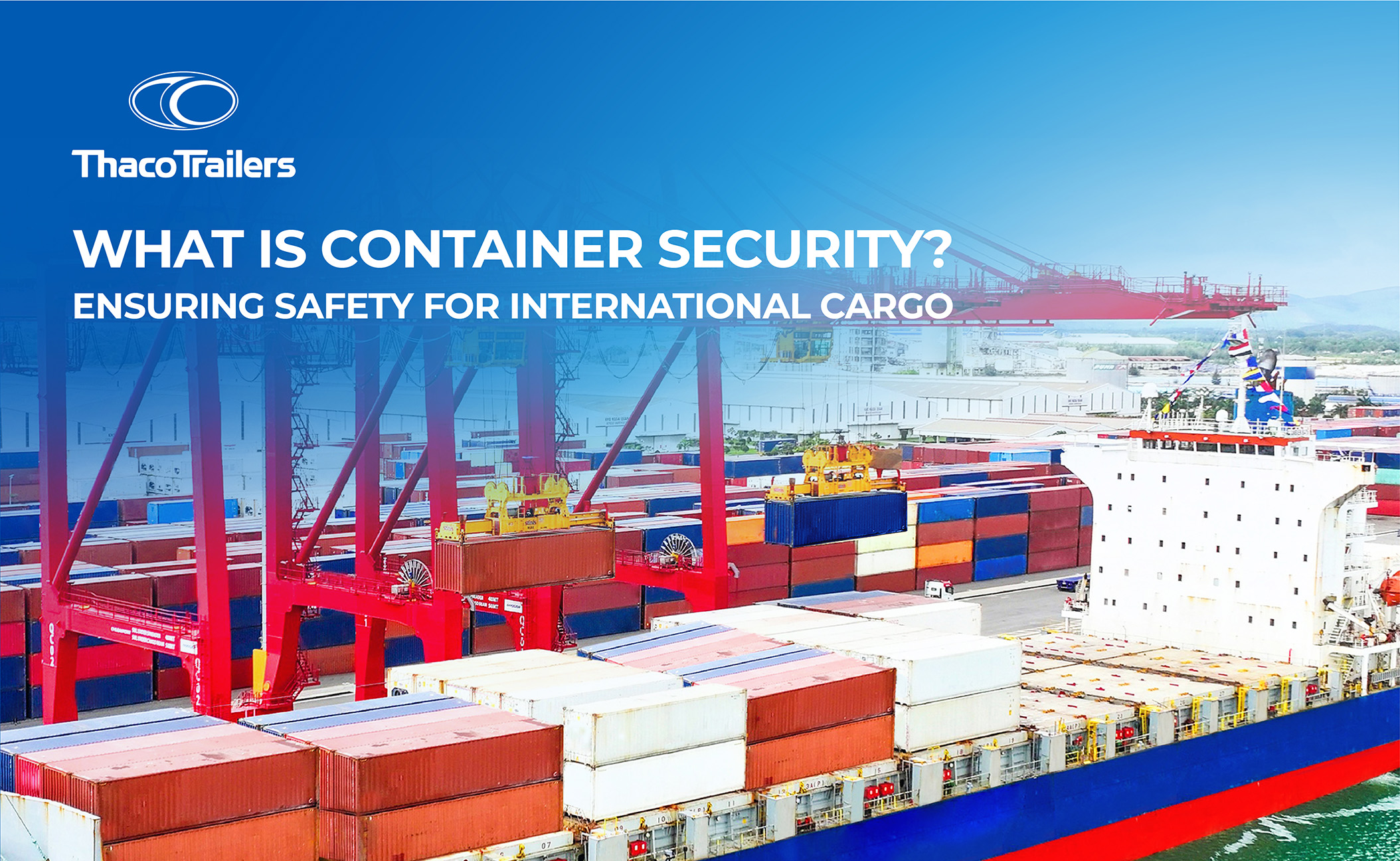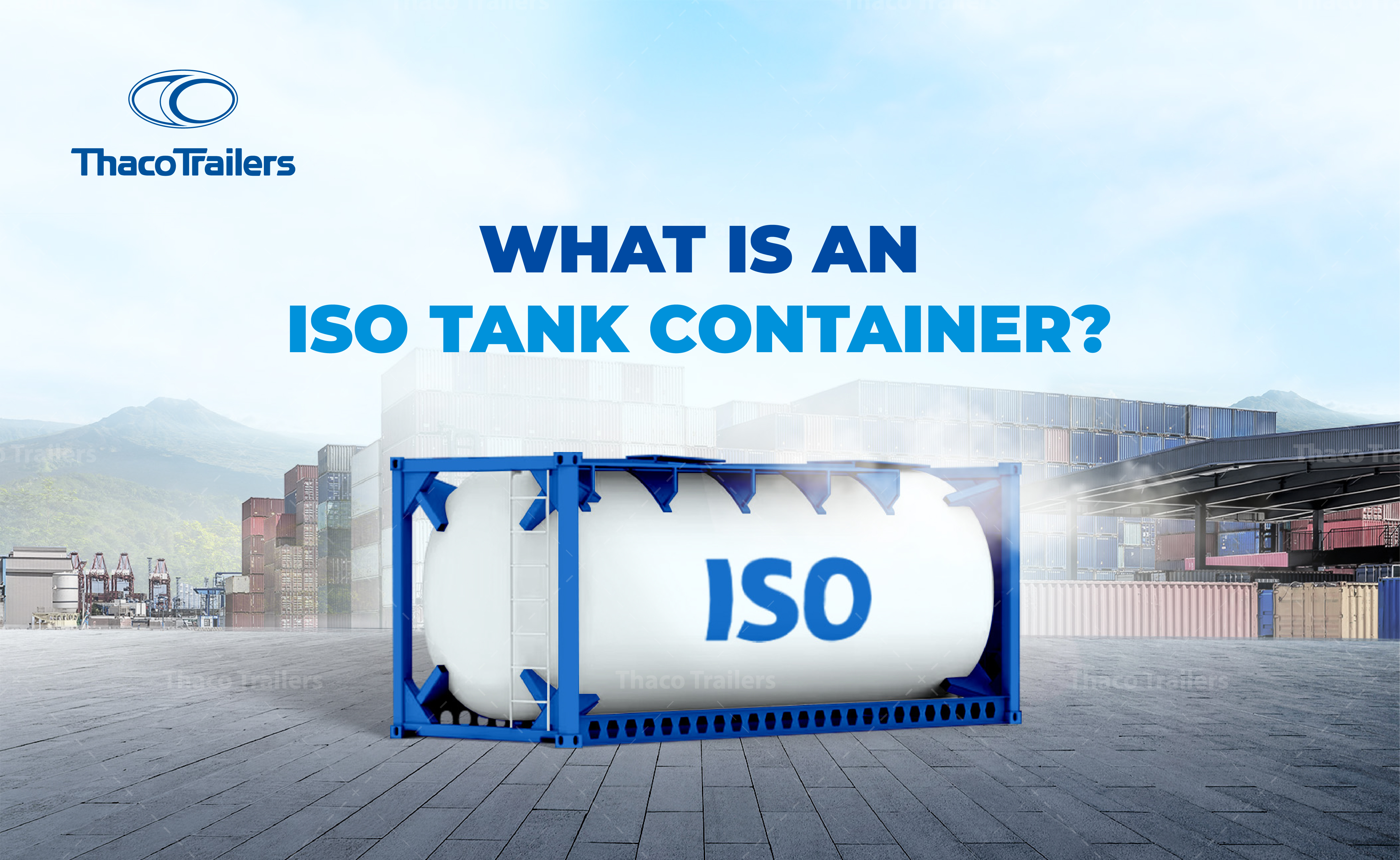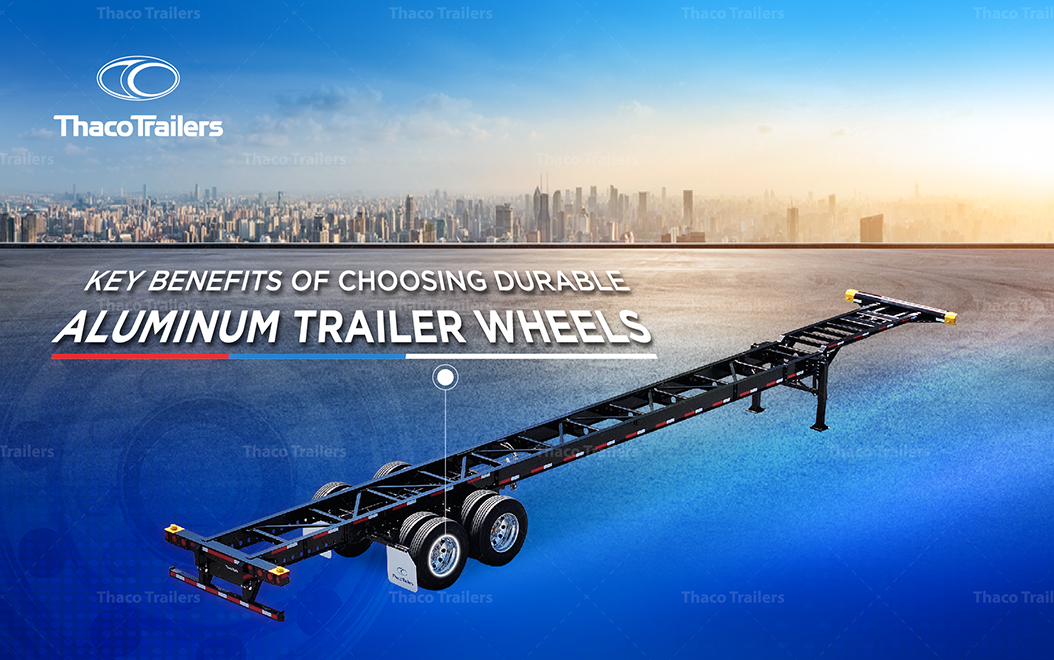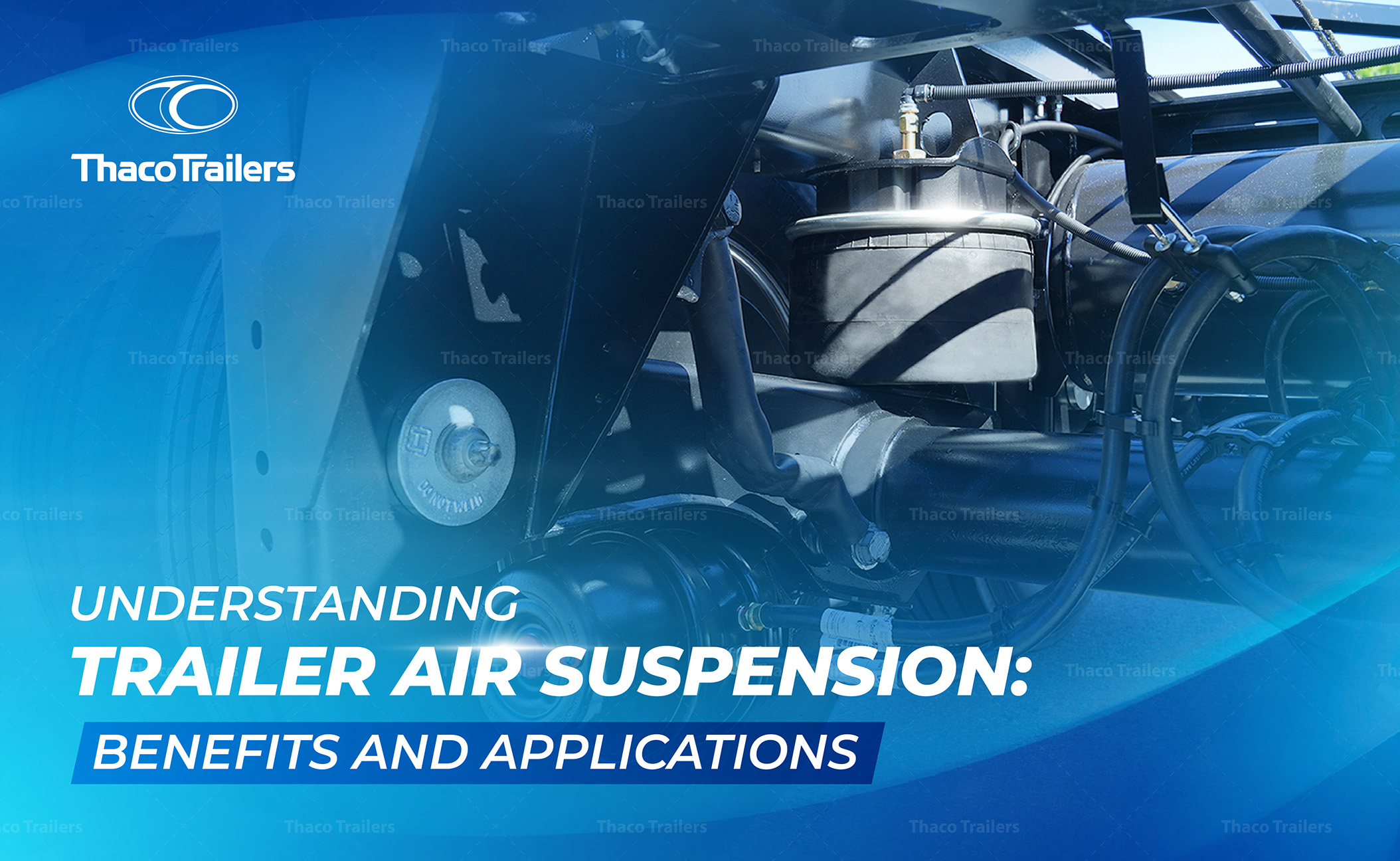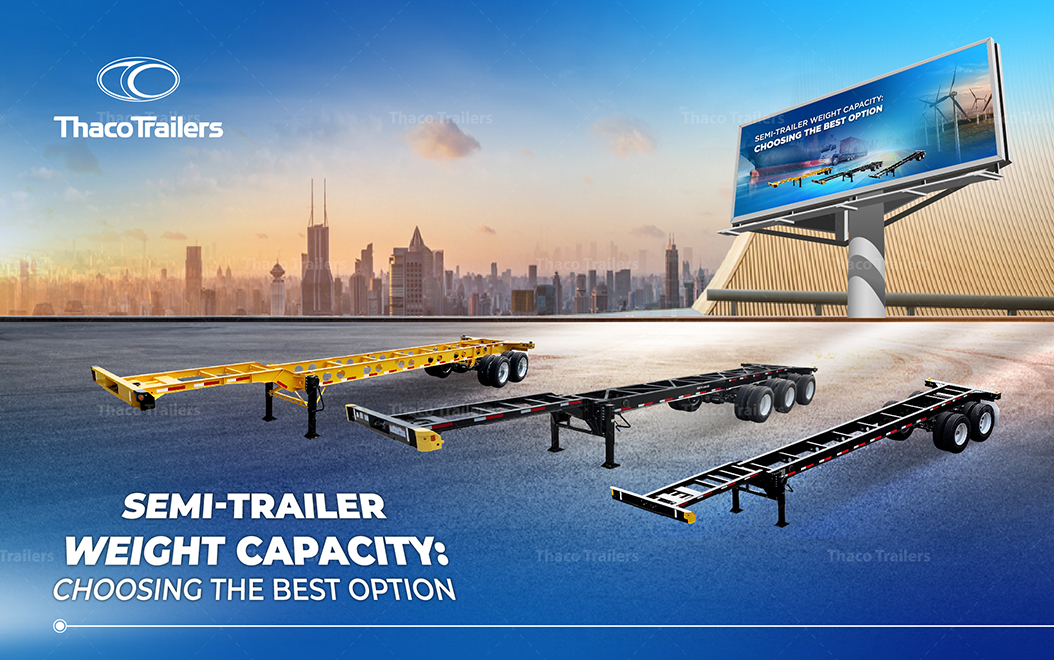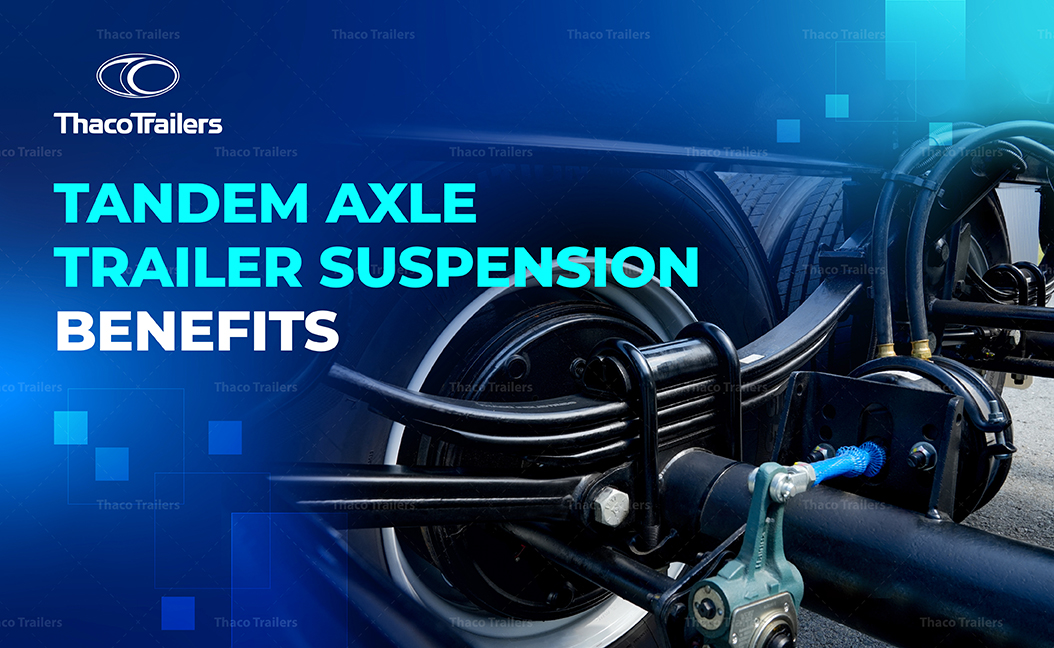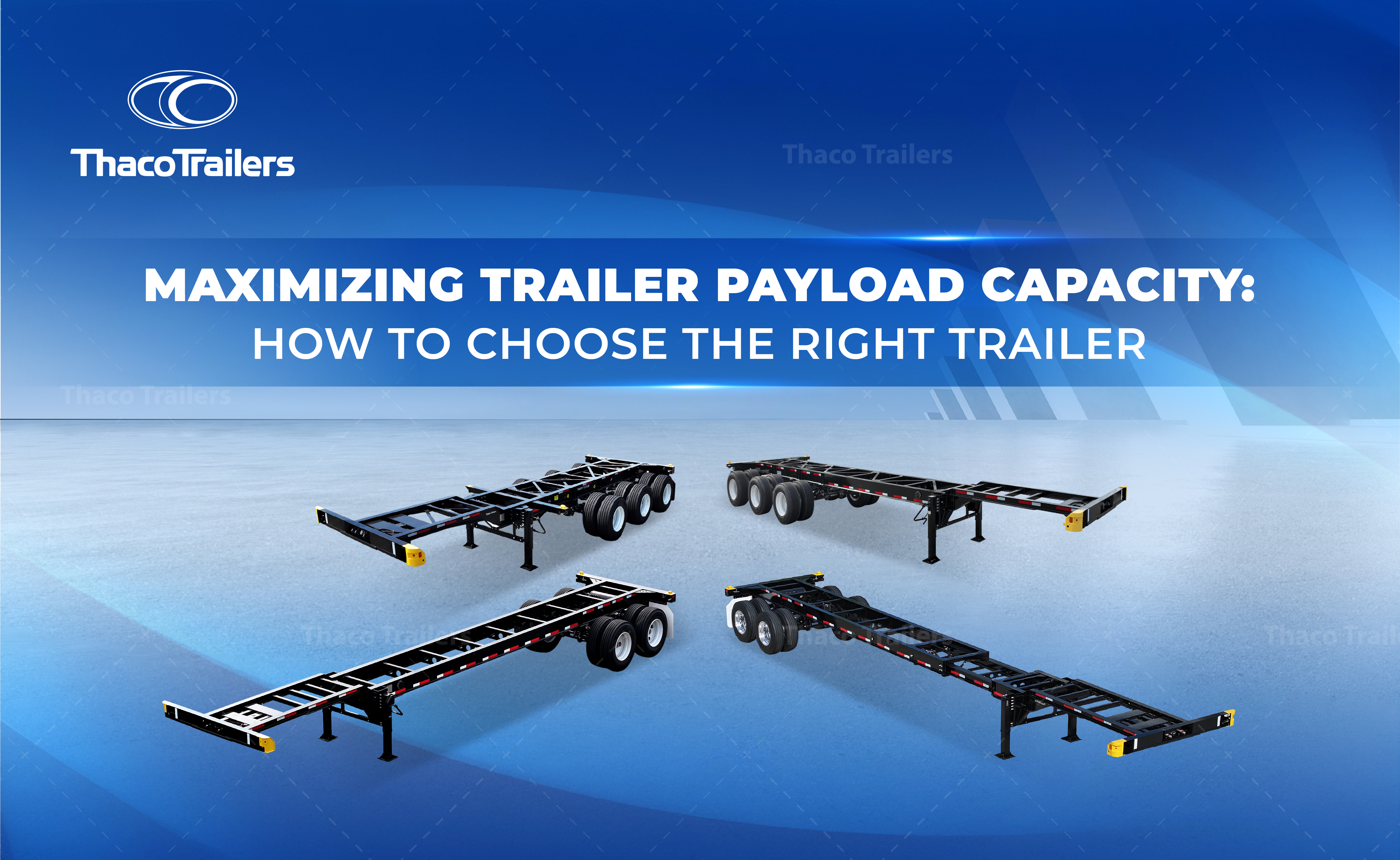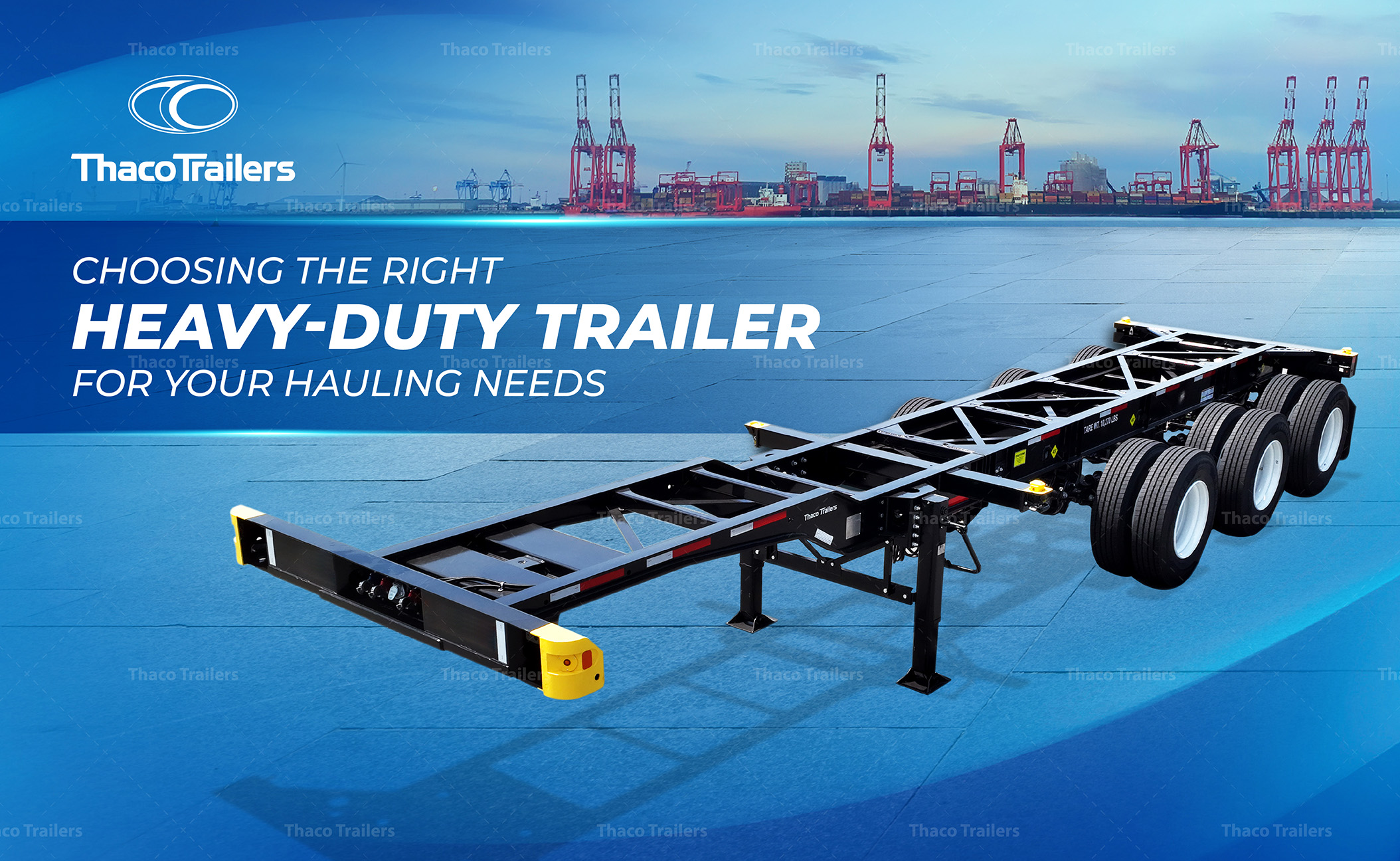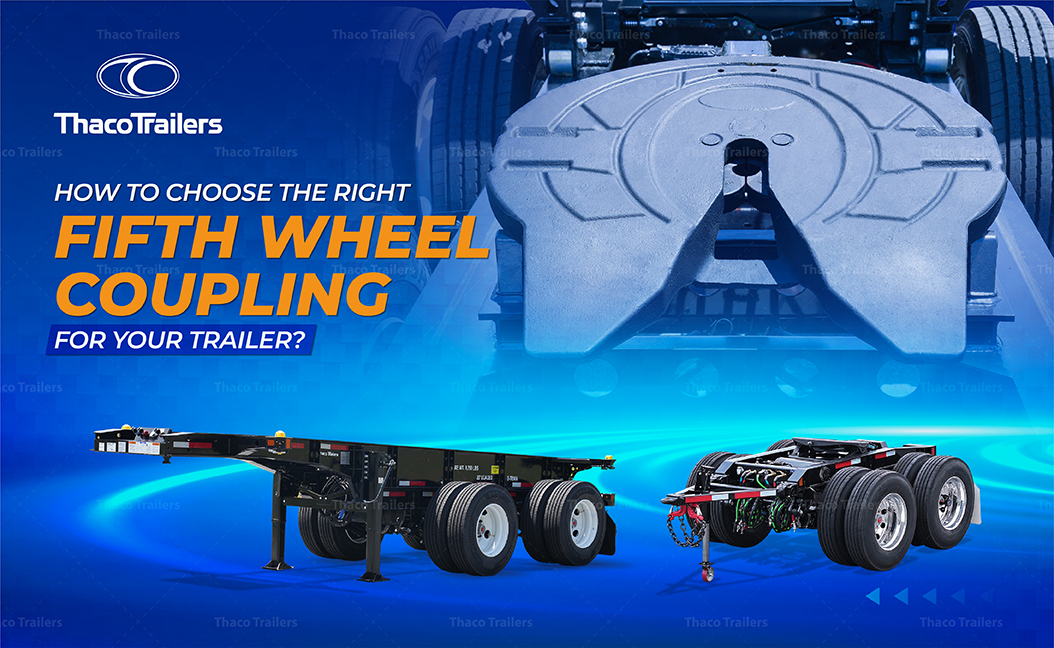WHAT IS TARE WEIGHT? DIFFERENCE BETWEEN TARE WEIGHT, PAYLOAD CAPACITY, AND GROSS VEHICLE WEIGHT RATING
In logistics and shipping, understanding semi-trailer tare weight estimates is critical for cost management and efficiency. What is tare weight? Tare weight, which is sometimes underestimated, is critical in developing proper pricing and operational plans. In this article, Thaco Trailers will explain the definition of semi-trailer’s tare weight and the differences between tare weight, gross weight, and payload capacity.
What is the tare weight of a semi-trailer?
The tare weight of a semi-trailer is the weight of the trailer itself when it is fully empty of cargo, gasoline, and other equipment. This weight is critical for determining the overall gross vehicle weight rating (GVWR) and payload capacity, as well as assuring compliance with transportation regulations.
The tare weight of a semi-trailer can vary depending on its type, size, and construction materials, such as:
- Intermodal Chassis (Skeletal Semi-Trailer): Typically ranges from 5,000 to 10,000 pounds (2,200 to 4,500 kilograms), depending on chassis length, number of axles, and steel grade.
- Standard Flatbed Semi-Trailer: Typically ranges from 6,000 to 12,000 pounds (2,700 to 5,400 kilograms).
- Dry Van Semi-Trailer: Generally weighs between 10,000 and 15,000 pounds (4,500 to 6,800 kilograms).
- Reefer (Refrigerated) Semi-Trailer: Heavier due to insulation and refrigeration units, weighing between 12,000 and 18,000 pounds (5,400 to 8,200 kilograms).
- Tanker Semi-Trailer: Generally weighs from 10,000 to 15,000 pounds (4,500 to 6,800 kilograms), depending on the tank material and design.
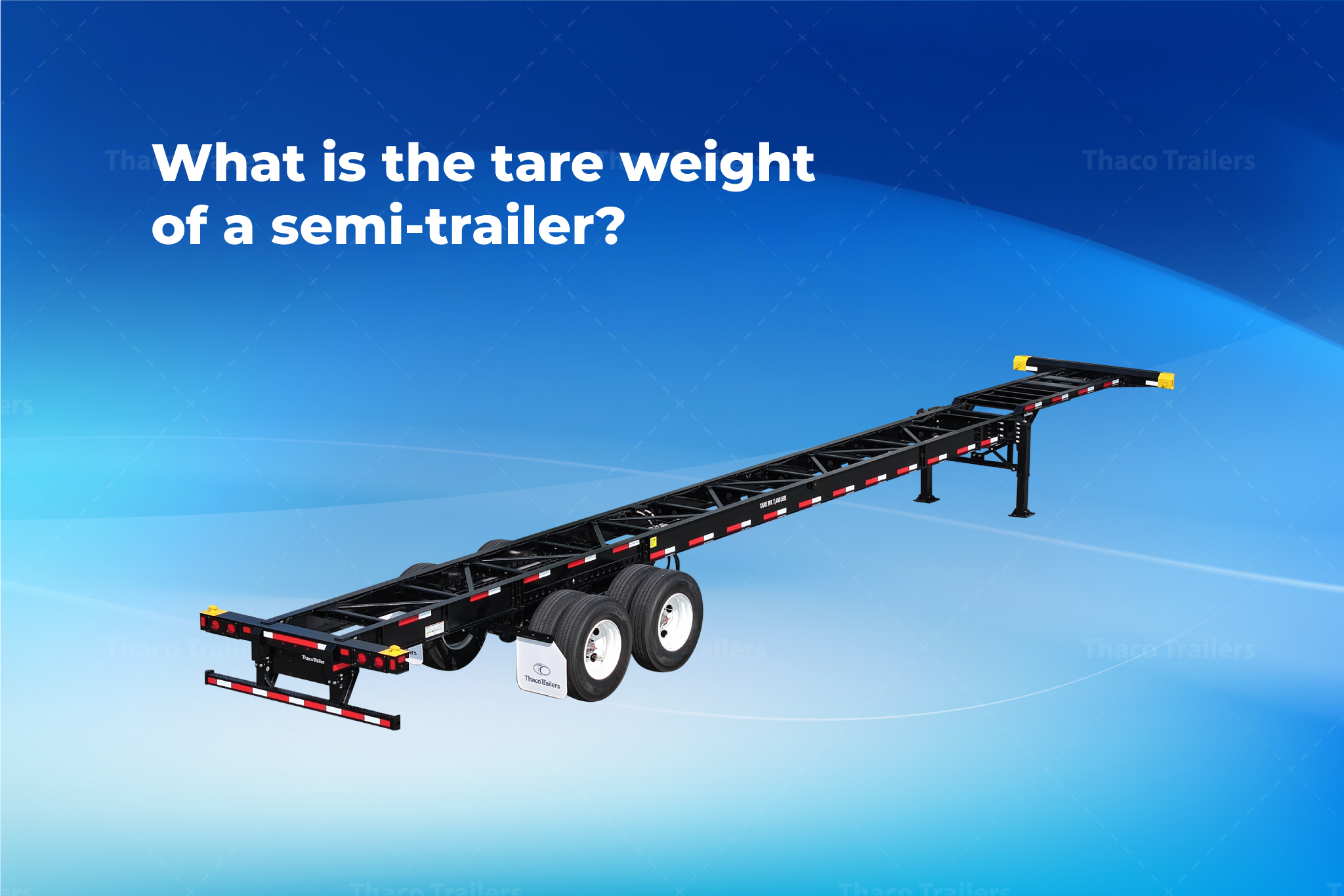
Difference between tare weight, payload capacity, and gross vehicle weight rating
In the semi-trailer industry, understanding weight-related terms is essential for efficient cargo management and regulatory compliance. Among the most important are tare weight, payload capacity, and gross vehicle weight rating (GVWR). These terms are interrelated and play a key role in determining how much cargo a trailer can legally and safely transport.
| Formula: Gross Vehicle Weight Rating (GVWR) = Tare Weight + Payload Capacity |
Tare weight
Tare weight refers to the weight of an empty semi-trailer or container, without any cargo, fuel, or additional equipment. This baseline figure is critical for calculating how much cargo the trailer can carry.
Payload capacity
Payload capacity is the maximum weight of the cargo that a semi-trailer can transport, excluding the trailer’s own weight. It reflects the trailer’s working capacity and helps ensure compliance with weight regulations.
Gross vehicle weight rating
GVWR is the total maximum weight that a fully loaded trailer is rated to handle by the manufacturer. It includes the tare weight and the payload, and exceeding it can compromise safety and violate transport laws.
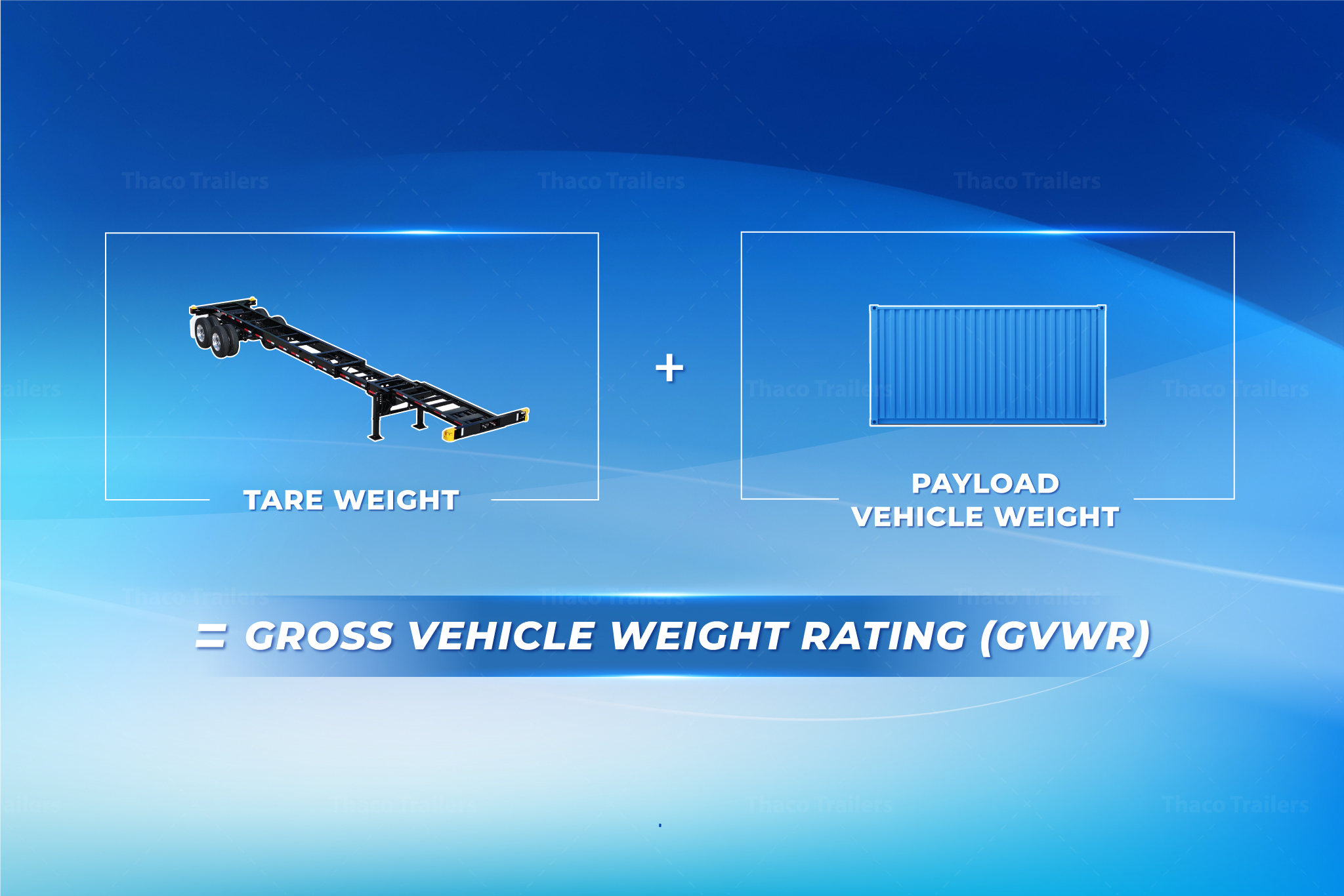
Benefits of knowing the tare weight
Why is tare weight important? Knowing the tare weight is essential for determining the maximum allowable cargo load, keeping to legal weight restrictions, and driving safely on the road. By determining a semi-trailer’s tare weight, operators may properly predict how much goods can be loaded without exceeding weight limitations. This is crucial not just for legal compliance and avoiding fines and penalties, but it also improves safety by minimizing dangerous overloading situations.
Important regulations about semi-trailer weights
It is very important to follow cargo weight rules for safety, to protect roads and buildings, and to follow the law. Here are some key points:
- Gross vehicle weight rating limits: This refers to the maximum weight that a vehicle is designed to handle. It considers the vehicle’s weight and that of its payload or cargo. Exceeding these limits could result in accidents and damage to bridges and roadways.
- Axle weight limits: To have an even weight distribution, semi-trailers have limits as to how much weight can be put on each axle. These limits are in place to keep the vehicle stable and prevent accidents caused by overloading any one axle.
- Bridge Formula: This formula measures the number of axles a vehicle is running and the distance between them. It is used in calculating the maximum weight that can be carried by the vehicle. The objective of this rule is the prevention of bridge damage caused by overweight/overloaded vehicles.
- State-Specific Rules: The weight limits and rules can be highly varied in each state, so following state-specific rules is a must. Transport providers need to be informed about these changes to avoid fines and ensure smooth operations when traveling between states.
- Cargo Securement Rules: Proper cargo securement is important for safety and it is also a requirement. The rules describe how the cargo must be secured to make sure that it will not move during transport and create hazardous driving conditions.
Thaco Trailers offers innovative semi-trailers engineered with advanced lightweight configurations
Thaco Trailers offers innovative semi-trailers designed with advanced lightweight configurations, optimizing cargo capacity and performance. These trailers utilize high-strength materials and advanced manufacturing techniques to reduce weight without compromising durability, allowing for increased payloads to be safely and efficiently transported.

Thaco Trailers’ semi-trailers also prioritize safety with features that ensure stable load distribution and secure cargo transport. We offer customisable choices to satisfy the individual demands of each transportation industry customer. Thaco Trailers, which is dedicated to quality and innovation, is an excellent alternative for organizations looking for efficient and sustainable transportation solutions.
Contact Information:
- Hotline: (+84) 933 805 707
- Email address: thacosv@thaco.com.vn
- Fanpage: https://www.facebook.com/thacotrailers.vn

